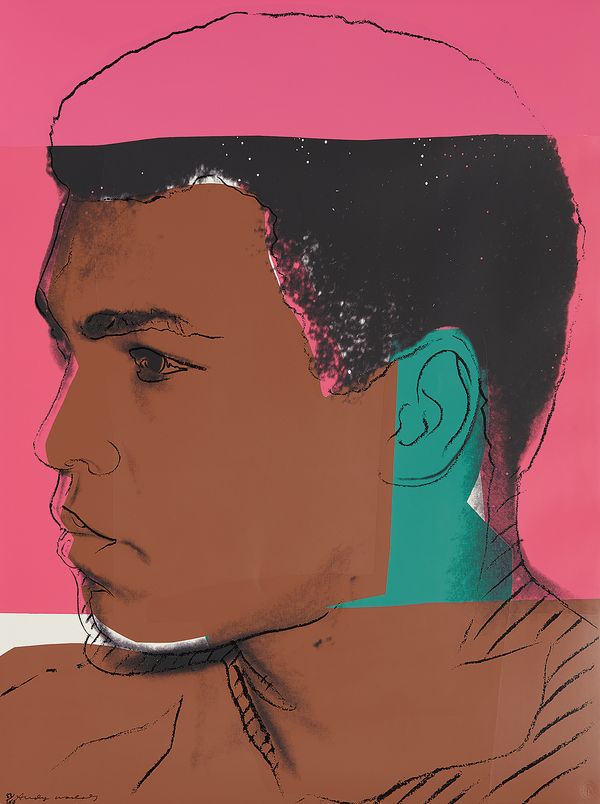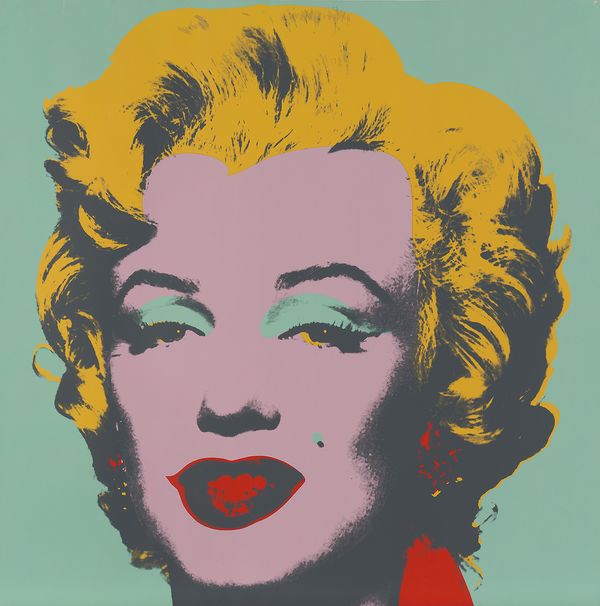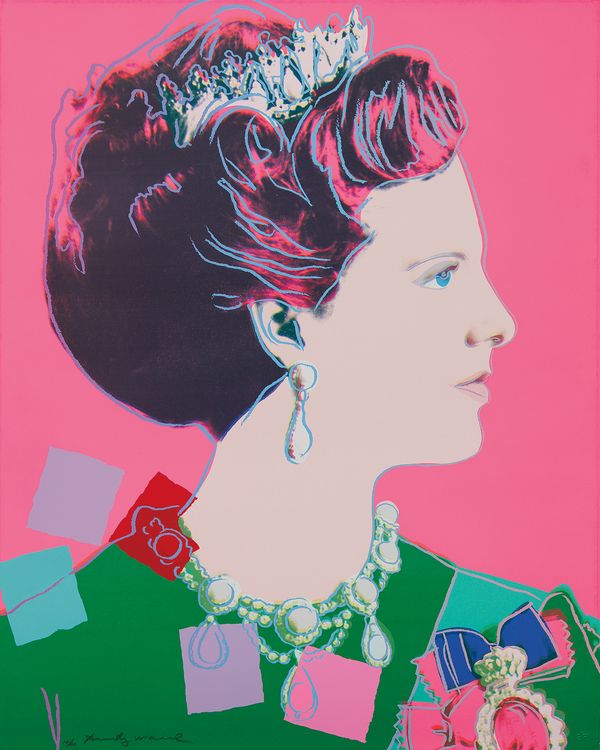Andy Warhol Muhammad Ali, 1978
Andy Warhol captured the likeness of anyone within five minutes of fame as well as anyone else who could afford him. Warhol was "the court painter of the 70's," as art historian Robert Rosenblum described, and he began a new era for portraiture. His subjects were artists and "outcasts," movie-stars and friends, monarchs and athletes—basically anyone who could grace covers of magazines, gossip columns or newspapers.
During the late 1960s, Warhol moved away from sourcing his imagery from the tabloids and began working from his own photographs. Use of the bulky Polaroid "Big Shot" was his preferred method; the camera was perfectly outfitted for close-ups. Warhol loved the decisions that the camera made for him, producing an instantaneous image that could be easily translated to screenprinting.
Andy Warhol Marilyn Monroe, 1967
His portraiture enshrined a glamorous, talented and showy "court." At first, Warhol chased after the rich and the famous, but then they began to chase after him, and private commissions became his big business. Through these commissions, Warhol attained notoriety that harkened back to an age when artists were financed by wealthy patrons. Everybody who was anybody from the scene of Studio 54 or from Warhol's cool and stylish Factory crew wanted a portrait.
Marilyn Monroe's image most fascinated Warhol. Creating several works from the same publicity photo of the actress, Warhol commemorated her tragic end with his bold prints. The misalignment of contours, bleached-out shadows, bright yellow hair and cherry red lips of lot 53, Marilyn Monroe—one of the top lots in our Editions & Works on Paper sale in New York—indicated Warhol's signature palette. Marilyn looked familiar, yet by Andy's hand, she became different, at once removed from our world while still appearing tangled by the realities of it.
Andy Warhol Queen Margrethe II of Denmark, from Reigning Queens, 1985
Throughout the 1970s and early '80s, Warhol's portraits become simpler as he abandoned gestural elements. Lot 55, Mao, was an impish rendition of an iconic symbol now seen with blue lips. A child-like approach to coloring appeared again in his later 1985 portrait of Queen Margrethe II of Denmark, lot 62, from his Reigning Queens series. Lot 60, Georgia O'Keeffe, meanwhile, was among Warhol's earliest uses of diamond dust in portraits. In this portrait, Warhol refined the artist's image; O'Keeffe appeared contemplative and serious, revealing of Warhol's admiration for the renowned painter.
Andy Warhol Georgia O'Keeffe, 1979. Unique screenprint in colors with diamond dust. This work is among Warhol's earliest uses of diamond dust.
In lot 54, Muhammad Ali, there was a similar richness of printing as well as a sense of depth created through the use of misregistration and overprinting. While at first glance they seem full of insouciance, Warhol's portraits revealed something deeper about his sitters—all surface, to be sure, and yet full of prescient observations.
View all works by Warhol in Editions & Works on Paper here >



